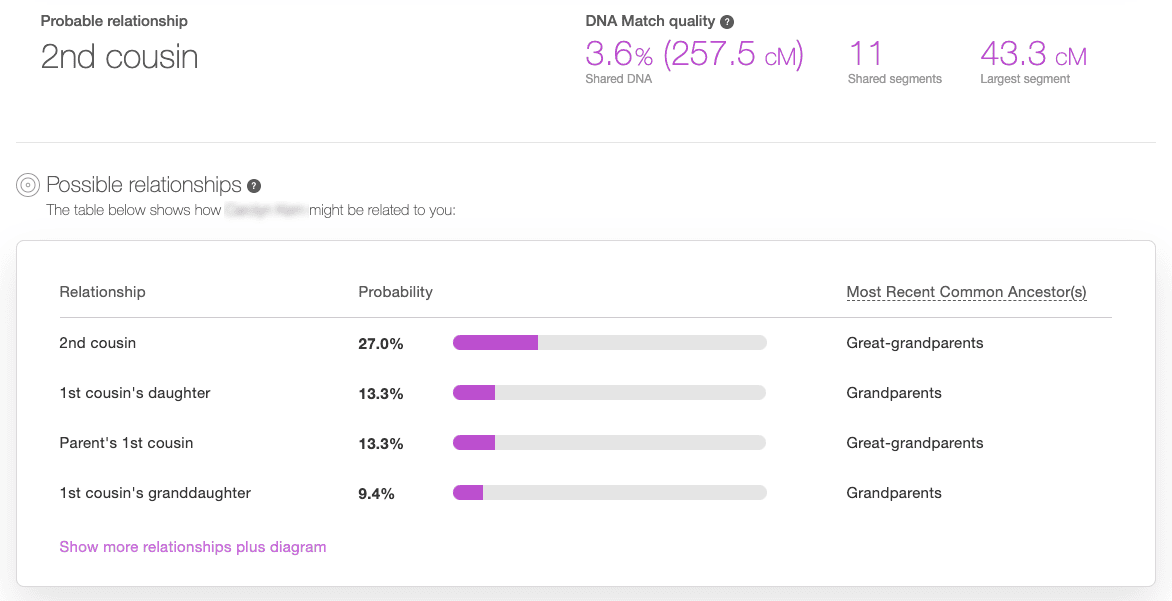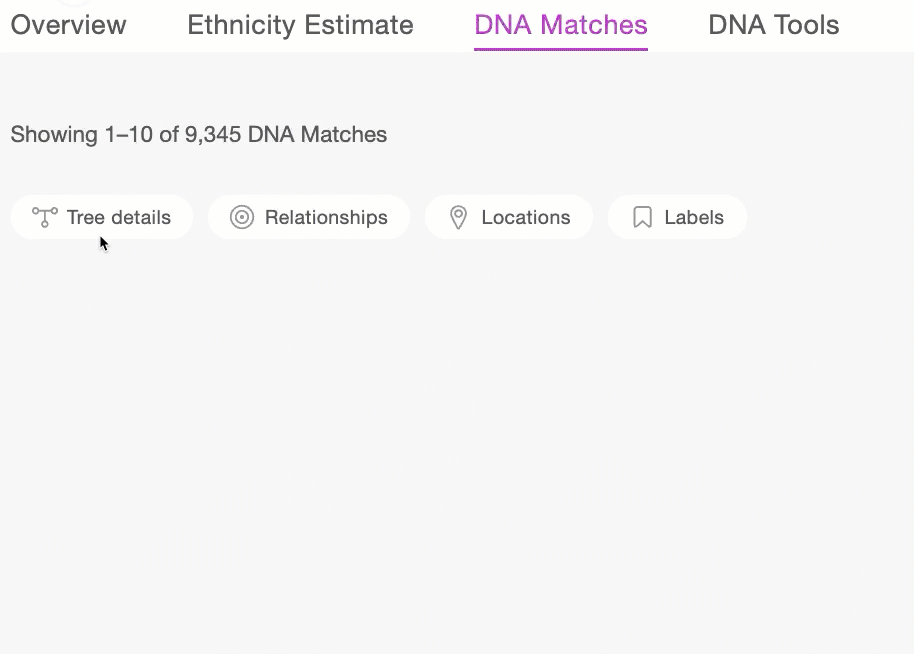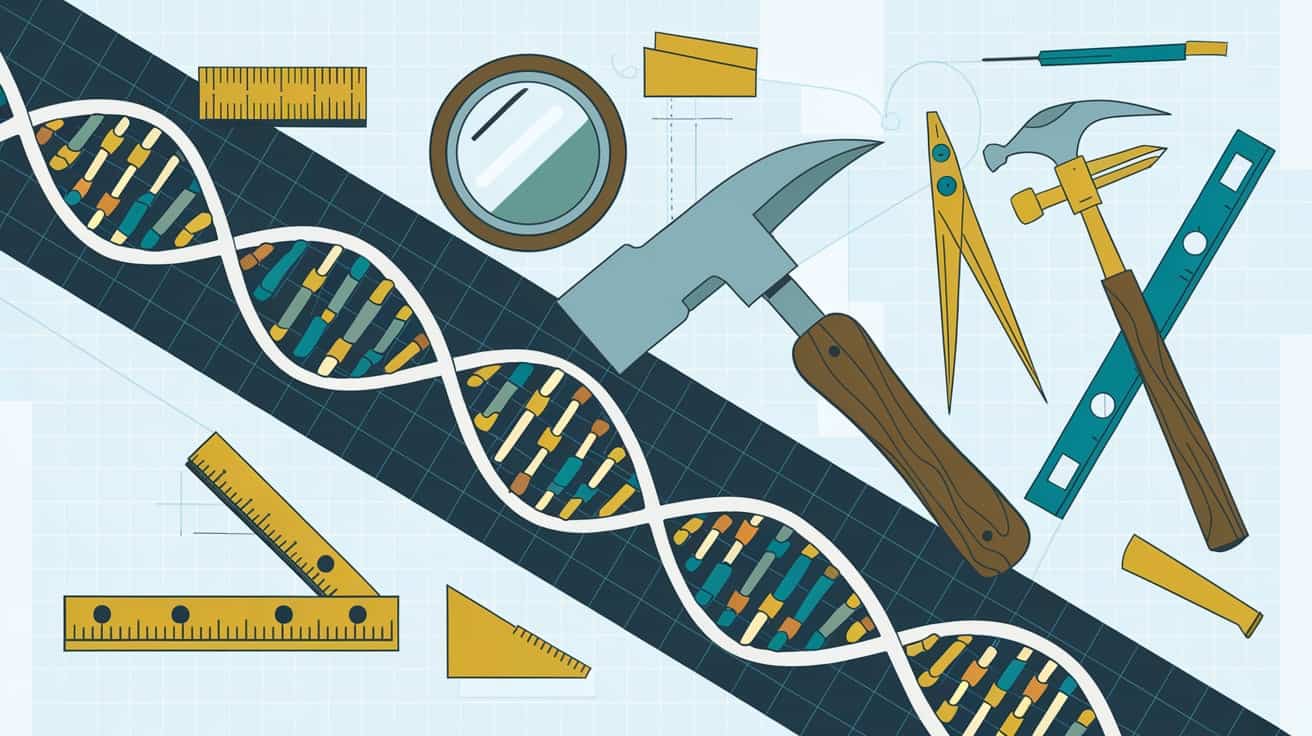If you’ve taken a DNA test with any company, you’re sitting on a goldmine of genetic information.
But are you really tapping into its full potential?
Did you know that MyHeritage lets you transfer your DNA data for free, no matter where you tested?
Why would you transfer?
With a free upload, you immediately gain access to your DNA matches – potentially thousands of new relatives waiting to be discovered. But that’s just the beginning.
If you want to use their advanced DNA tools, you can for a small, one-time fee. By unlocking these advanced features, you gain access to a suite of game-changing tools that will supercharge your genetic genealogy research.
From automatic clustering to advanced chromosome mapping, we’re about to show you how MyHeritage can unlock family connections you never knew existed.
Let’s dive in and explore the tools that are transforming the way we understand our genetic heritage.
1. Free DNA Uploads
Why upload to MyHeritage if you’ve tested elsewhere?
Simple. More data, more discoveries.
MyHeritage accepts uploads from all major DNA testing companies. It’s free, it’s fast, and it’s your ticket to a treasure trove of family connections you never knew existed.
Here’s why MyHeritage’s free upload policy is a game-changer:
- Maximize Your Testing Investment: You’ve already shelled out for a DNA test. Why limit yourself to one company’s database? Upload to MyHeritage and double, triple, or quadruple your chances of finding meaningful matches.
- Access to a Global Database: MyHeritage isn’t just another US-centric platform. We’re talking about a truly international user base. That obscure European branch of your family? You’re more likely to find them here.
- Unlock Premium Tools: Sure, the upload is free which lets you see and contact your matches. For a one-time unlock fee (often on sale), you get access to all of MyHeritage’s advanced DNA tools. We’re talking serious bang for your buck.
- No New Spit Required: Got elderly relatives who’ve already tested elsewhere? Mobility-impaired family members? Deceased ancestors you managed to test before they passed? Or you just don’t want to pay for another test. Upload their data and breathe new life into your research.
- Compare Across Platforms: Different companies, different algorithms. By uploading to MyHeritage, you’re getting a fresh perspective on your DNA. It’s like getting a second opinion on your genetic genealogy.
Most people test with one company and call it a day. They’re leaving countless connections and insights on the table. That’s where you get your edge.
Pro Tip: Set a reminder to check for new matches regularly. MyHeritage is constantly growing its user base. That DNA upload you do today could lead to a breakthrough match next month.
If you’re not uploading your DNA to MyHeritage, you’re not just missing out – you’re actively choosing to ignore potential breakthroughs in your family history research.
Don’t leave your genetic genealogy potential untapped. Upload your DNA to MyHeritage today, and watch as a whole new world of family connections unfolds before your eyes.
Here’s how easy it is to upload:
2. Shared Matches – Your Gateway to Global Connections
Shared DNA matches are where the rubber meets the road in genetic genealogy. Here’s why they’re a game-changer:
- Global Reach: MyHeritage isn’t just another US-centric database. We’re talking worldwide connections. Got ancestors from obscure European villages? Chances are, MyHeritage has users from there.
- Detailed Match Info: Each match comes with the essentials – estimated relationship, shared DNA amount, and number of shared segments. But here’s the kicker: MyHeritage shows you which country your match is from. It’s like a genetic treasure map of your family’s migration patterns.
- Tree Integration: If your match has a family tree, you can view it right from the match page. Spot a familiar surname? You might solve the connection puzzle on the spot.
- Easy Communication: Reaching out to matches is straightforward. But remember, DNA testing can be sensitive. Be tactful in your approach.
- Dynamic Updates: Your match list isn’t static. MyHeritage is constantly finding new connections. That brick wall-busting match could pop up any day.

3. Ethnicity Estimates
MyHeritage’s Ethnicity Estimate isn’t just another pie chart of your ancestral origins. It’s a fresh lens on your genetic makeup, and here’s why that matters:
- Unique Reference Populations: MyHeritage has its own distinct set of reference populations. This isn’t a carbon copy of what you’ve seen elsewhere.
- Regular Updates: As science advances, so does MyHeritage. Your estimate evolves with the latest research, giving you an ever-clearer picture of your origins.
Different companies use different algorithms and reference populations. That Ancestry or 23andMe test you took? It’s one piece of the puzzle. MyHeritage offers another piece – and sometimes, it’s the piece that makes everything click.
Think of it this way: You wouldn’t trust a single medical opinion for a critical health issue. Why trust a single company’s take on your genetic heritage?
By uploading to MyHeritage, you’re not just getting another ethnicity estimate. You’re getting a second opinion on your genetic genealogy.
It’s an additional perspective that could confirm what you know, challenge what you thought you knew, or reveal aspects of your heritage you never imagined.
Don’t settle for a single view of your genetic heritage. Upload to MyHeritage and see your ancestry in a whole new light.
4. Theory of Family Relativity – Your Personal Genealogy Supercomputer
The Theory of Family Relativity feature is where MyHeritage leaves the competition in the dust. It’s not just another tool – it’s like having a team of world-class genealogists working 24/7 to solve your family mysteries.

Here’s what makes it a game-changer:
- Automatic Connection Mapping: This tool doesn’t just show you matches – it shows you how you could be related. It’s connecting dots you didn’t even know existed.
- Multi-Source Integration: We’re talking family trees, historical records, and other users’ data, all seamlessly combined. It’s not just your research anymore – it’s the collective knowledge of millions.
- Visual Relationship Paths: You get a clear, color-coded map of how you might connect to your matches. Green for family trees, brown for historical records. It’s your family history, visualized.
- Multiple Theory Suggestions: Sometimes, there’s more than one way you might be related. This tool doesn’t just give you one option – it lays out all the possibilities. You’re getting the full picture, not just a snapshot.
- Confidence Scoring: Each theory comes with a confidence score. High confidence? You’re probably onto something big. Low confidence? Still valuable – it’s a lead to investigate.
But let’s be clear – these are theories, not facts. They’re incredibly powerful starting points, but always verify. That’s just good genealogy.
Pro Tip: Want to supercharge your Theory of Family Relativity results? Build out your family tree as much as possible. The more data you feed it, the more connections it can make.
5. Chromosome Browser – Your DNA Detective Magnifying Glass
If you’re not using MyHeritage’s Chromosome Browser, you’re leaving critical evidence on the table. This isn’t just another pretty visualization – it’s a power tool for pinpointing exactly where you share DNA with your matches.
Here’s why the Chromosome Browser is a game-changer:
- Visual DNA Mapping: We’re talking a clear, color-coded view of exactly where you share DNA with your matches. It’s like a genetic treasure map, showing you precisely where to dig.
- Multiple Match Comparison: You can compare yourself with up to seven matches at once. That’s not just convenient – it’s the key to unlocking complex family relationships.
- Segment Analysis: Each shared segment is clickable, giving you detailed info on start and end positions, and the number of SNPs (Single Nucleotide Polymorphisms). It’s the nitty-gritty data that serious genetic genealogists crave.
- Triangulation Detection: When three or more people share the same DNA segment, the tool highlights it. This is huge for confirming common ancestors and breaking through brick walls.
- Centimorgans at a Glance: The tool shows you the total shared cMs for each match, right there in the interface. No more clicking back and forth – everything you need is right in front of you.

The Chromosome Browser isn’t just about pretty pictures. It’s about giving you the power to:
- Help confirm paper trail relationships with genetic evidence
- Identify which ancestors passed down specific DNA segments
- Group matches into genetic clusters, hinting at common ancestral lines
- Spot patterns that could lead to breakthrough discoveries in your family tree
Most people aren’t using this tool to its full potential. They’re intimidated by the science, or they don’t see the immediate value. That’s where you get your edge.
Pro Tip: Start by comparing known relatives – siblings, cousins, etc. This will help you understand how DNA segments are inherited in your family, making it easier to interpret unknown matches.
If you’re serious about leveraging your DNA for family history breakthroughs, this tool isn’t optional – it’s essential.
6. AutoClusters – Your DNA Match Sorting Superpower
If you’re still manually sorting through your DNA matches, you’re living in the genealogical stone age. MyHeritage’s AutoClusters is about to catapult your research into the future.
Here’s why AutoClusters is a game-changer:
- Automatic Grouping: This tool takes your DNA matches and groups them into clusters faster than you can say “Great-great-grandparent.”
- Visual Matrix: You get a color-coded matrix that’s not just pretty to look at – it’s a roadmap to your family lines. Each cluster potentially represents a different branch of your family tree.
- Customizable Thresholds: You’re in control. Adjust the minimum and maximum cM thresholds to focus on close relatives or cast a wider net. It’s flexibility that adapts to your research needs.
- Downloadable Results: This isn’t just a one-time view. Download your results as an html or CSV file. It’s your genetic genealogy homework, ready to go.
- Integrated Match Details: Click on any match in the cluster, and you’re taken straight to their profile. No more jumping between tools – it’s all seamlessly connected.

AutoClusters isn’t just about organizing your matches. It’s about:
- Identifying unknown branches of your family tree. Each cluster could be a new line to explore.
- Breaking through brick walls. Patterns in clusters might reveal connections your traditional research missed.
- Prioritizing your research. Focus on clusters with known relatives to extend those lines, or dive into mystery clusters to uncover new ones.
- Validating your existing research. Do your known relatives cluster as expected? If not, you might have some investigating to do.
Most people are overwhelmed by their match lists, missing key patterns and connections. They’re leaving valuable insights on the table. That’s where you get your edge.
Pro Tip: After generating your AutoClusters, look for known relatives in each cluster. They can serve as anchors, helping you identify which family line each cluster represents.
7. CM Explainer – Your Genetic Relationship Decoder
If you’re still guessing at how you’re related to your matches, you’re doing it wrong. MyHeritage’s CM Explainer is about to become your new best friend in genetic genealogy.
Here’s why the CM Explainer is a game-changer:
- Instant Relationship Predictions: Feed it the shared centiMorgans (cMs), and boom – you get a breakdown of possible relationships. No more squinting at charts or second-guessing yourself.
- Probability Percentages: This isn’t just a list of possibilities. Each potential relationship comes with a probability percentage. It’s like having a statistician in your back pocket.
- Age-Adjusted Predictions: Got ages for you and your match? Input them, and the tool refines its predictions. It’s the difference between a wild guess and an educated estimate.
- Full Spectrum of Possibilities: From parent-child to distant cousins, it covers the gamut. Half relationships, removed relationships – it’s all there. No stone left unturned.
- User-Friendly Interface: You don’t need a PhD in genetics to use this. It’s straightforward, visual, and designed for real-world genealogists.

The CM Explainer isn’t just about satisfying curiosity. It’s about:
- Prioritizing your research efforts. Focus on the most likely relationships first.
- Validating your paper trail. Does the DNA match the documented relationship?
- Breaking through brick walls. That mystery match might be the key to extending your tree – if you can figure out how you’re related.
- Avoiding wild goose chases. Why waste time on unlikely connections when you can focus on promising leads?
Pro Tip: Use the CM Explainer in conjunction with the Theory of Family Relativity. If the theory suggests a relationship, plug the numbers into the CM Explainer to see if it’s genetically plausible.
8. DNA Match Filters
MyHeritage’s DNA Match Filters aren’t just a neat feature – they’re your secret weapon for cutting through the noise and striking genealogical gold.
Here’s why these filters are a game-changer:
- Laser-Focused Search: With thousands of matches, you need precision. Filter by degree of relationship (close, extended, distant family), and zoom in on those crucial close relatives or intriguing distant cousins.
- Tree Detective Work: Got matches with trees? Filter for them. It’s like having a team of researchers working around the clock to extend your family lines.
- Geographic Goldmine: MyHeritage shows you where your matches live. Filter by country, and suddenly you’re tracing your family’s global migration patterns.
- Smart Matches: Combine DNA and tree data to find matches who share ancestors with you. It’s like genealogy on steroids.
- Theory Hunting: Filter for matches with a Theory of Family Relativity. These are your hot leads – connections backed by MyHeritage’s powerful algorithms.

Pro Tip: Combine filters for maximum impact. Looking for close relatives in Australia with shared ancestral surnames? You can do that in seconds.
Don’t let your next big genealogical discovery get lost in the shuffle. Master these filters, and watch as your family history research shifts into high gear.
Upload Now
Your DNA holds the key to unlocking your family’s past. MyHeritage provides the tools to turn that key.
Remember:
- Upload your DNA to MyHeritage for free
- Instantly access thousands of new matches
- Unlock advanced tools for a small, one-time fee
Don’t let your genetic data go to waste. Your next big discovery could be waiting at MyHeritage.
Upload now and start exploring your family’s hidden history.


